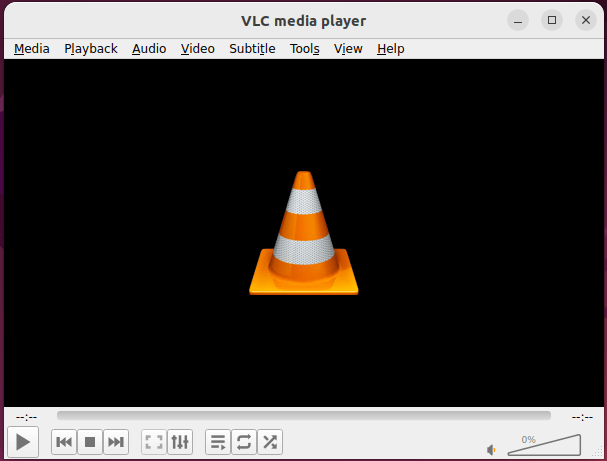How To Install VLC Media Player on Fedora 41

VLC Media Player is a powerful, open-source multimedia player that is widely recognized for its versatility and support for a vast array of audio and video formats. Whether you’re looking to watch movies, listen to music, or stream online content, VLC provides a reliable solution. This guide will walk you through the process of installing VLC Media Player on Fedora 41, ensuring you have everything you need to enjoy your multimedia experience.
Understanding VLC Media Player
What is VLC?
VLC Media Player is a free and open-source cross-platform media player developed by the VideoLAN project. It supports numerous multimedia formats without the need for additional codecs. From MP4 and AVI to FLAC and MKV, VLC can handle them all seamlessly.
Why Choose VLC?
- Cross-Platform Compatibility: VLC runs on various operating systems, including Windows, macOS, Linux, Android, and iOS.
- Regular Updates: The active community behind VLC ensures it remains up-to-date with the latest features and security patches.
- Extensive Features: Beyond basic playback, VLC offers advanced features like streaming, video conversion, and support for subtitles.
Preparing Your Fedora System
Updating Your System
Before installing any new software, it’s essential to ensure your Fedora system is up-to-date. This helps prevent compatibility issues during installation. Open your terminal and run the following commands:
sudo dnf update
sudo dnf upgradeChecking System Requirements
To run VLC smoothly on Fedora 41, make sure your system meets the following minimum requirements:
- Processor: 1 GHz or faster
- RAM: 512 MB (1 GB recommended)
- Disk Space: At least 200 MB available
- Graphics: A graphics card capable of rendering video
Setting Up RPM Fusion Repositories
What is RPM Fusion?
The RPM Fusion repository provides additional software packages that are not included in the default Fedora repositories. This includes multimedia codecs and applications like VLC that enhance your media playback experience.
Enabling RPM Fusion Repositories
To install VLC on Fedora 41, you need to enable both the free and non-free RPM Fusion repositories. Execute the following commands in your terminal:
sudo dnf install https://mirrors.rpmfusion.org/free/fedora/rpmfusion-free-release-$(rpm -E %fedora).noarch.rpm
sudo dnf install https://mirrors.rpmfusion.org/nonfree/fedora/rpmfusion-nonfree-release-$(rpm -E %fedora).noarch.rpmThis will add the necessary repositories to your system. After enabling these repositories, you can access a broader range of software packages.
Configuring Additional Repositories
If you want to ensure that you have access to proprietary codecs that may be required for certain media files, enable the OpenH264 library by running:
sudo dnf config-manager --enable fedora-cisco-openh264Installing VLC Media Player
Installation via Terminal
The easiest way to install VLC on Fedora is through the terminal. Simply run the following command:
sudo dnf install vlcThis command will download and install VLC along with any necessary dependencies from the enabled repositories.
Alternative Installation Methods
If you prefer using a graphical interface, you can also install VLC using the GNOME Software application. Follow these steps:
- Open the GNOME Software application from your applications menu.
- In the search bar, type “VLC” and press Enter.
- Select VLC Media Player from the search results.
- Click on the “Install” button to begin the installation process.
Verifying the Installation
Checking VLC Version
After installation is complete, it’s a good idea to verify that VLC has been installed correctly. You can check the version by running:
vlc --versionThis command will display the installed version of VLC Media Player along with some additional information about its build.
Launching VLC
You can launch VLC in two ways:
- From Terminal: Type `
vlc` in your terminal and press Enter. - From GUI: Search for “VLC” in your applications menu and click on it to start the player.

Configuring VLC for Optimal Performance
Installing Additional Codecs
If you encounter issues playing certain media files, you may need to install additional codecs. This is especially true for proprietary formats. Run this command to ensure all necessary multimedia codecs are installed:
sudo dnf groupupdate multimedia --setop="install_weak_deps=False" --exclude=PackageKit-gstreamer-plugin && sudo dnf groupupdate sound-and-videoYou can customize various settings in VLC for an enhanced playback experience. To access preferences:
- Select “Tools” from the menu bar.
- Select “Preferences”. Here you can adjust settings such as video output modules, audio device selection, and subtitle options.
Troubleshooting Common Issues
Common Installation Problems
If you encounter issues during installation or while trying to play media files, consider these common problems:
- Error Messages: If you see error messages related to missing dependencies or packages not found, ensure that your RPM Fusion repositories are correctly enabled.
- No Sound or Video Playback: If VLC opens but does not play sound or video, check your audio output settings within VLC preferences.
- Certain Formats Not Playing: If specific file formats won’t play, ensure that all necessary codecs are installed as mentioned earlier.
Solutions and Workarounds
If problems persist after installation, try these troubleshooting tips:
- Reinstalling VLC: If issues continue, consider removing and reinstalling VLC using:
sudo dnf remove vlc sudo dnf install vlc - Caching Issues: If media files do not load correctly, clearing cached data might help. This can usually be done within preferences under “Input/Codecs”.
- User Permissions: If you’re having trouble playing files from certain directories (like external drives), check user permissions for those directories.
Congratulations! You have successfully installed VLC. Thanks for using this tutorial for installing the VLC Media Player on Fedora 41 system. For additional help or useful information, we recommend you check the VLC website.